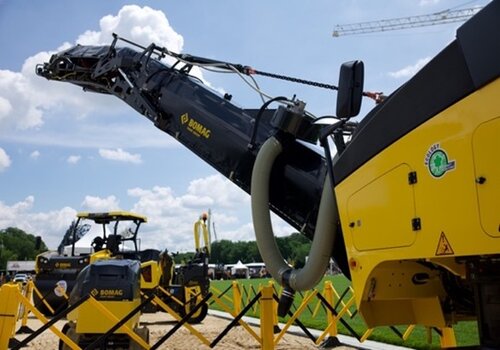Alarmed by worker injuries, OSHA is stepping up enforcement.
With the rapid rise of e-commerce, the number of Americans working in warehouses has almost tripled in the past decade, and consequently, an increasing number of warehouse workers are getting injured on the job.
Back in January 2013, warehouses employed about 707,100 people nationwide, but by February 2022, that figure had hit 1.9 million, and it’s hovered there ever since. At the same time, warehouses are becoming more dangerous workplaces.
In 2021, the number of work-related injuries and illnesses in the transportation and warehousing sector climbed 22.3% from the previous year to 253,100, according to the most recent statistics from the Occupational Safety and Health Administration. That was the second-largest rate of increase among all business sectors, trailing only retail trade, OSHA said.
Similarly, the transportation and warehousing sector in 2021 saw a 23% increase in the number of incidents resulting in an employee missing at least one day of work, with 122,700 total cases in the private sector.
In response, OSHA in July announced a three-year national emphasis program to prevent hazards in warehouses, distribution centers and similar workplaces. OSHA said it will conduct comprehensive safety inspections covering issues such as industrial vehicle operations, material handling and storage, walking and working surfaces, means of egress and fire protection.
In addition, OSHA will assess heat and ergonomic hazards, and unsafe conditions may result in health inspections, the agency said.
“This emphasis program allows OSHA to direct resources to establishments where evidence shows employers must be more intentional in addressing the root causes of worker injuries and align their business practices with the goal to ensure worker health and safety,” said Doug Parker, OSHA’s assistant secretary for occupational safety and health.
For warehouse operators, an unsafe facility can put the entire business at risk. Worker’s compensation claims drive up insurance costs and result in lawsuits, which eat into the bottom line. OSHA can issue fines for breaking its rules. And worker injuries result in a warehouse being understaffed, making it less productive and less able to provide excellent customer service.
As a company develops a reputation for being indifferent to worker safety, it may lose out in the competition for talented workers, a key concern across most industries these days.
Fortunately for warehouse operators and their workers, simple actions can go a long way toward reducing the rate of injuries. McCue, a leading supplier of safety solutions in industrial settings, offers the following tips:
Forklifts
Operating forklifts unsafely is a leading cause of warehouse injuries and a common reason for OSHA citations. Workers should be trained and certified to operate forklifts, and companies should establish rules for their safe operation.
Businesses should conduct regular refresher training and evaluation, taking note of operators who are driving forklifts in an unsafe manner. Prior to each shift, workers or supervisors should perform inspections to check for damage to controls or equipment.
Installing impact-tested safety barriers can keep walkways separate from areas where forklifts are operating, reducing the number of accidents.
When a forklift injures a worker, it’s typically because the driver didn’t see the worker walking or standing nearby. Camera systems mounted on forklifts help to prevent accidents, and new autonomous forklifts take human error out of the equation by using computer vision technology.
Docks
One of the worst types of warehouse accidents is when a worker becomes pinned or crushed between a forklift and the loading dock, often because the forklift has run off the dock and struck someone.
Forklift operators should be trained to be attentive and to drive slowly on dock plates, making sure dock edges are clear and safe to support loads. Warning signs should be used to alert workers when they’re too close to docks.
Hazardous materials
Train workers how to store and handle hazardous substances on the premises and establish protocols and a communication strategy to keep workers safe. Employees should be given personal protective equipment whenever necessary and should be trained how to use it and maintain it.
Falling items
Items falling from racking are a major hazard in warehouses, but safety barriers can keep workers away from dangerous areas, and fall-arrest systems such as safety nets prevent products from sliding off shelves or racking.
Conveyors
Place safety equipment between the conveyor and workers to prevent their clothing, limbs or hair from becoming entangled in moving conveyors. Also, be sure to adhere to proper lockout/tag-out procedures when performing maintenance or repairing a conveyor.
Storage of materials
Improperly stacked loads can lead to products falling on top of workers, and aisles cluttered with products that haven’t been put away can lead to slips and trips. That’s why aisles and passageways should be kept clear, and loads should be stacked evenly and neatly.
Heavier loads should be stacked on lower or middle shelves, and only one load should be moved at a time.
Manual lifting and handling
Lifting heavy items the wrong way is one of the most common causes of injuries in warehouses, so workers should be trained in ergonomics. Lifting or handling products while in an awkward position or posture, repeating the same movements for long periods and overexertion all contribute to musculoskeletal injuries.
Warehouse operators should determine if the need to lift objects can be eliminated through smart engineering design. They also should observe workers lifting and carrying items and point out bad practices such as lifting with one’s back instead of one’s legs. Moreover, employees should be taught to ask for help if items are too heavy.
Charging stations
They should be located away from hot surfaces and open flames, and smoking near them should be prohibited. Fire extinguishers should be readily available and in good working condition. Eye-washing and shower facilities should be available in case workers are exposed to chemicals.
Resources
Consult industry experts such as OSHA, the National Safety Council and MHI to learn more about operating warehouses safely.
Photo credit: kckate16/BIGSTOCKPHOTO.COM












